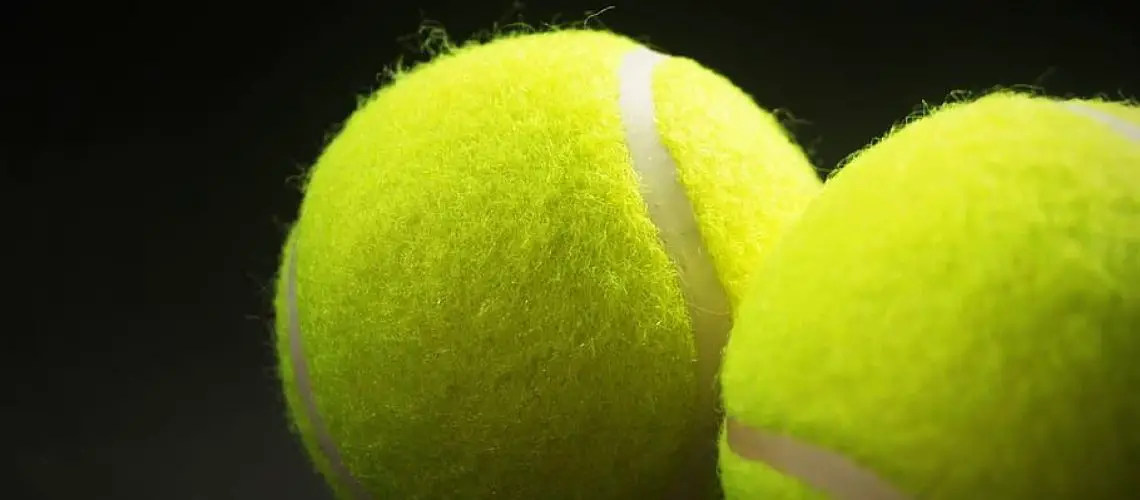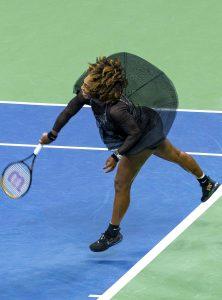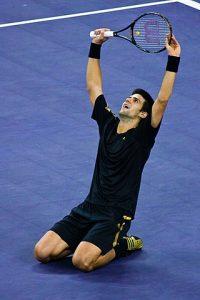We may earn money or products from the companies mentioned in this post.
Brief Overview of Tennis as a Sport

Tennis, often referred to as the “sport of kings,” has a rich history and is enjoyed by millions of people worldwide Dating back to the 19th century, tennis has evolved into a highly competitive and globally recognized sport With its origins in France and England, it quickly gained popularity and became a favorite pastime for both nobility and commoners alike
Today, tennis is played at various levels, ranging from recreational players enjoying friendly matches to professional athletes competing in international tournaments like Wimbledon and the US Open Its appeal lies not only in the excitement of watching thrilling matches but also in the physical benefits it offers to those who actively participate
1 Popularity and History
Tennis has come a long way since its humble beginnings From grass courts to clay or hard surfaces, the sport’s adaptability has contributed to its global appeal The introduction of professional tournaments and televised coverage have further propelled tennis into popular culture
In recent years, stars like Serena Williams, Rafael Nadal, Roger Federer, and Naomi Osaka have captivated audiences with their exceptional skills on court As a result, more people are becoming interested in picking up a racket themselves or cheering for their favorite players from the comfort of their homes
2 Health Benefits of Playing Tennis
Beyond its entertainment value, tennis provides numerous health benefits that make it an excellent choice for physical activity Whether you’re playing singles or doubles, tennis offers a full-body workout that engages multiple muscle groups simultaneously
The fast-paced nature of the game helps improve cardiovascular endurance by boosting heart rate and increasing oxygen intake Additionally, tennis requires quick movements such as sprinting across the court or changing direction rapidly, which enhances agility and speed
Furthermore, the repetitive swinging motions involved in hitting the ball strengthen the upper body, particularly the arms, shoulders, and core muscles The lower body also benefits from constant movement and lunging during gameplay, leading to improved leg strength and stability
Importance of Understanding the Muscles Used in Tennis

In order to excel in tennis and minimize the risk of injuries, it is crucial to have a good understanding of the specific muscles involved in the sport This knowledge allows players to target these muscles through training and conditioning exercises
1 Injury Prevention
Tennis involves a variety of movements that can put strain on certain muscle groups if they are not adequately prepared or conditioned By identifying these areas prone to injury, players can focus on strengthening them through targeted exercises
For example, shoulder injuries are common among tennis players due to the repetitive overhead motions required for serves and smashes Strengthening the rotator cuff muscles helps stabilize the shoulder joint and reduce the risk of injury
2 Improved Performance
An understanding of the muscles used in tennis can also lead to improved performance on court By targeting specific muscle groups during training sessions, players can enhance their power, speed, and endurance
For instance, strong leg muscles contribute to explosive movements needed for quick sprints across the court or powerful shots Developing core strength aids in maintaining balance during dynamic movements while optimizing racket control and shot accuracy
Upper Body Muscles Used in Tennis

Tennis is a sport that requires not only skill and strategy, but also physical strength and agility The upper body plays a crucial role in executing powerful shots and maintaining stability during intense rallies Let’s explore the key muscles involved in tennis and how they contribute to a player’s performance
Shoulder and Arm Muscles
When it comes to hitting the ball with precision and power, the shoulder and arm muscles take center stage Among these muscles, the deltoids play a vital role in facilitating shoulder movements To strengthen the deltoids, lateral deltoid raises can be incorporated into strength training routines, helping players improve their range of motion and stability
During serves and powerful shots, the deltoids come into action, providing the necessary force to execute accurate shots with speed These muscles are responsible for generating rotational power, allowing players to hit winners from any position on the court
Triceps and Biceps
The triceps and biceps are two muscle groups that work hand-in-hand to generate force during swings The triceps are located at the back of the upper arm, while the biceps are situated at its front Strengthening these muscles is essential for achieving optimal shot execution
Exercises like tricep dips or push-ups can help develop strong tricep muscles As for their role in tennis strokes, the triceps play a significant part in backhand techniques These muscles provide stability and control during backhand swings, enabling players to generate power while maintaining accuracy
In addition to enhancing performance on the court, strong tricep muscles also aid in preventing injuries such as Tennis Elbow – a common condition caused by repetitive strain on the forearm tendons By strengthening your triceps, you can minimize the risk of developing this painful condition and continue playing tennis at your best
Lower Body Muscles Used in Tennis

When it comes to playing tennis, having a strong lower body is essential for agility and quick lateral movements on the court The main muscles in the lower body that are engaged during a game of tennis include the quadriceps, hamstrings, and calves
Exercises to Strengthen Lower Body Muscles
To strengthen these crucial muscles, there are various exercises that can be incorporated into your training routine Squats are an excellent compound exercise that targets multiple muscle groups in the lower body, including the quads, hamstrings, and glutes Lunges are another effective exercise that focuses on the quads and hamstrings while also engaging your core for stability Calf raises specifically target the calf muscles and can help improve explosiveness during movements on the court
In addition to these strength-building exercises, it’s important to incorporate dynamic stretching before playing tennis Dynamic stretches involve moving parts of your body through a full range of motion This helps warm up the muscles and increase blood flow to prevent injuries such as strains or pulls during gameplay
The Importance of Lower Body Strength in Generating Power
Having adequate lower body strength is not only crucial for agility but also plays a significant role in generating power during serves and groundstrokes When serving or hitting groundstrokes, power is generated from the legs as you push off from the ground Strong quadriceps and hamstrings allow you to generate more force when pushing off, resulting in more powerful shots
Additionally, strong calves contribute to stability and balance when making quick changes in direction or executing explosive movements on the court By strengthening these lower body muscles, you can enhance your overall performance on the tennis court
Core Muscles Used in Tennis

Tennis is a sport that demands agility, power, and precision To excel on the court, players rely heavily on their core muscles – the abdominal, oblique, and lower back muscles These muscles are essential for providing stability and balance during intense rallies and quick movements
Role of Core Muscles in Tennis
The core plays a crucial role in every aspect of tennis, from serves to groundstrokes One of its primary functions is generating rotational power through the hips and torso, allowing players to generate maximum racquet speed This power translates into explosive shots that can catch opponents off guard
In addition to generating power, a strong core also helps maintain proper alignment during strokes This alignment ensures efficient energy transfer throughout the body, enabling players to strike the ball with accuracy and control
Core Strengthening Exercises for Tennis Players
To enhance their core strength specifically for tennis, players can incorporate various exercises into their training routine
-
Planks:
Planks are an excellent exercise for building overall core strength They engage multiple muscle groups simultaneously and help improve stability Variations like side planks further target the oblique muscles -
Russian Twists:
Russian twists are another effective exercise that targets the oblique muscles Sitting on the floor with your legs raised and feet off the ground, twist your torso from side to side while holding a medicine ball or weight plate -
Medicine Ball Throws:
Medicine ball throws involve explosive movements that mimic tennis strokes These exercises not only strengthen the core but also improve coordination and power generation required for powerful shots on the court
By incorporating these core strengthening exercises into their training regimen, tennis players can enhance their stability, balance, and overall performance on the court A strong core is the foundation for success in this dynamic and competitive sport
Conclusion

In conclusion, tennis is a physically demanding sport that requires the use of various muscle groups Understanding the main muscles used in tennis can help players focus their training and conditioning efforts to improve performance and reduce the risk of injury
Upper Body Muscles
The upper body plays a crucial role in generating power and control during tennis strokes The deltoids, rotator cuff muscles, triceps, and biceps are heavily involved in executing powerful serves, forehands, backhands, and volleys Developing strength and flexibility in these muscles can enhance racket speed, shot accuracy, and overall performance on the court
Lower Body Muscles
The lower body provides stability, agility, and explosive movements necessary for quick directional changes on the tennis court The quadriceps, hamstrings, and calves are particularly important for generating power during movements like sprints, lunges, jumps, and pivots Strengthening these muscles improves speed, endurance, balance, and helps prevent common lower body injuries
Core Muscles
The core muscles play a vital role in maintaining proper posture and transferring force between the upper and lower body The abdominal muscles (including the rectus abdominis), obliques (internal/external), and lower back muscles provide stability during rotational movements like serving or hitting groundstrokes Building strength in these muscle groups enhances overall stability on the court while reducing strain on other parts of the body
It is essential for tennis players to prioritize both strength training exercises targeting these specific muscle groups as well as incorporating flexibility exercises into their workout routines This combination will not only optimize performance but also minimize the risk of sustaining injuries that could hinder progress or even end a player’s season prematurely
So remember – work your upper body, lower body, and core muscles to reach your full potential on the tennis court!
Useful Links

Does Tennis Make Your Arms Bigger
Why Tennis Players Should Lift Weights (Plus Two Free …
What Muscles Do Tennis Work?
Tennis: How Does it Benefit Your Health?
Is Tennis Good Exercise? All You Need to Know
Tennis Fit Series: The Fundamentals of Recovery for …
What muscles are used in tennis?
The most essential muscles for tennis?
What’s the MOST Important Muscle Group for a Tennis …
Applied physiology of tennis performance – PMC
Does playing tennis increase muscle mass?
6 Strength Exercises for Tennis Players
Tennis Serves up Plenty of Lifestyle Benefits
Strength Training for Tennis Players (Detailed Program)
Exercises To Build Up Forearm Strength
6 Tips on Strength Training for Tennis Players
Tennis Players Up Their Game by Building Their Core …






